How Pallet Inverters Solve Ergonomic Handling in Boutique Production Plants in Italy?
In my years in the packaging industry, I've seen countless factories. But there's something special about the boutique production plants in Italy. They focus on quality, on craft. Whether it's artisanal foods, high-end fashion, or precision components, every product is handled with care. This hands-on approach, however, often creates a serious problem: the physical strain on workers. Manually moving and re-stacking heavy loads from pallets is tough, repetitive work that leads to injuries. And when your most skilled people are out with back pain, your entire operation suffers. Production slows down, quality can dip, and you face the costs of worker compensation and lost productivity. It's a hidden tax on your success. The solution, however, is often simpler than you think. A pallet inverter is a machine designed to solve this exact problem. It mechanically grips and rotates the entire load, allowing for a quick and safe pallet exchange without any manual lifting.
Pallet inverters solve ergonomic handling issues in Italian boutique plants by completely automating the most physically demanding task: transferring goods between pallets. Instead of workers manually lifting, bending, and twisting to move boxes or bags, the machine safely clamps the load, rotates it 180 degrees, and allows the old pallet to be removed from the top. This single action eliminates the primary causes of musculoskeletal injuries (MSDs), protecting the health of skilled workers and ensuring production continuity.
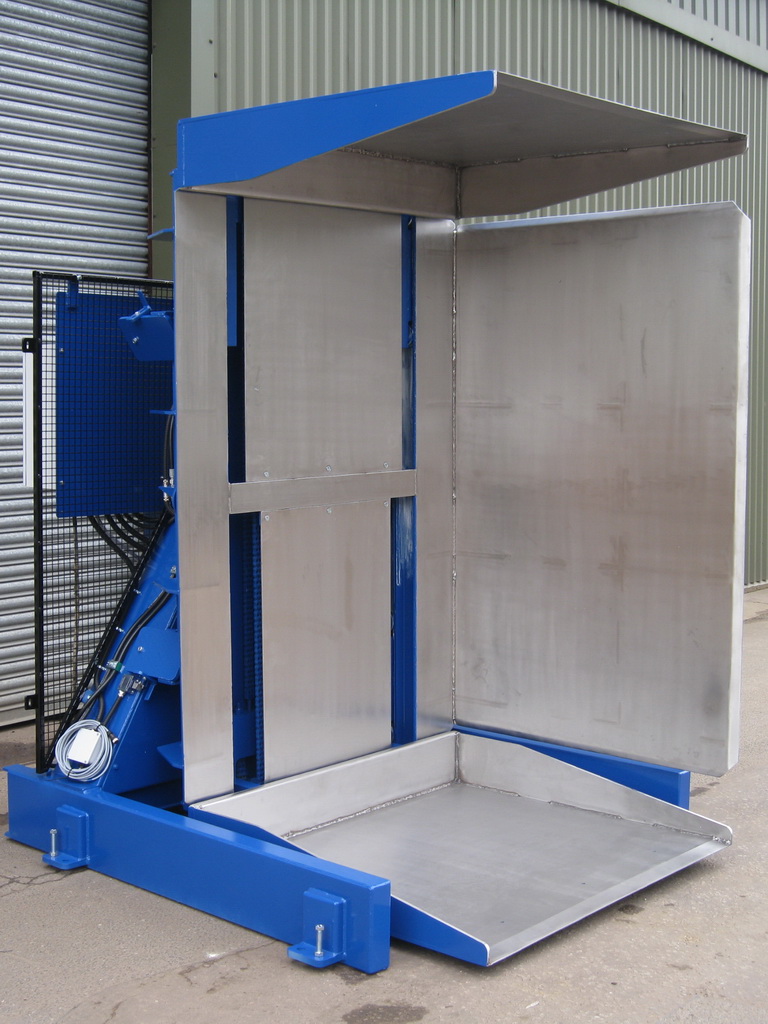
This might sound like a straightforward mechanical fix, and it is. But the impact goes far beyond just preventing injuries. For a boutique plant in Italy, where every detail matters, this type of automation is not about replacing people. It's about protecting your most valuable asset—your skilled team. It empowers them to focus on what they do best, ensuring the quality that defines your brand. In my work, I've learned that the best solutions are the ones that support both your people and your process. Let's dive deeper into the specific ways a pallet inverter can transform a production floor. We'll look at the risks they remove, how they fit into a tight space, what to consider for high-value goods, and the other benefits they bring.
What specific ergonomic risks do pallet inverters eliminate in a boutique setting?
In a boutique production environment, every movement counts. You rely on the steady hands and sharp eyes of your team. But what happens when their bodies start to fail them? The constant need to transfer products from, say, an in-house wooden pallet to a plastic shipping pallet creates a cycle of risky movements. Workers are forced to bend at the waist, lift heavy boxes, twist their torsos, and repeat this process hundreds of times a day. This is a recipe for disaster. These actions put immense strain on the lower back, shoulders, and wrists. It’s not a matter of if an injury will occur, but when. And when it does, it's not just a personal tragedy for the employee; it’s a direct hit to your business.
A pallet inverter directly eliminates the most dangerous ergonomic risks by taking over the actions of bending, lifting, and twisting. It mechanically performs the entire pallet transfer process. This means workers no longer have to manually de-stack and re-stack goods, which is the primary source of musculoskeletal disorders (MSDs) like herniated discs, chronic back pain, and shoulder strains in a warehouse or production setting.
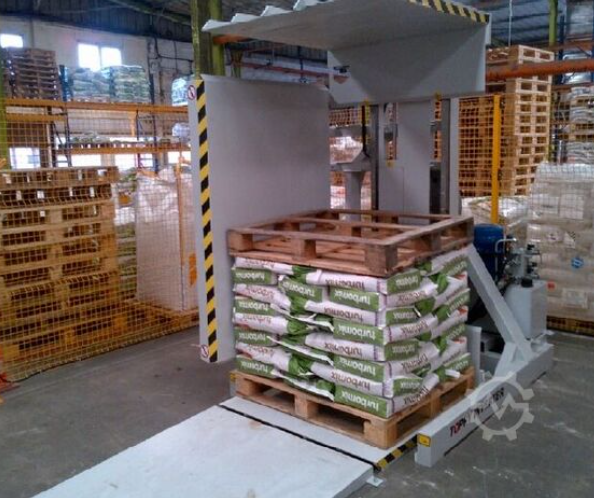
To truly understand the impact, we need to break down the problem. Ergonomic risks aren't just about heavy lifting. They are about a combination of factors that, over time, wear down the human body. As an engineer, I like to look at the mechanics of a process. Let's compare manual handling to using a pallet inverter.
The Mechanics of Manual vs. Automated Handling
When an employee transfers a load manually, they engage in a series of harmful motions. Imagine a 1,000 kg load of tile or bottled olive oil. To move it, workers have to take it apart, piece by piece.
- Bending and Reaching: They bend down to pick up a box from the bottom of the pallet. This puts huge pressure on the lumbar spine.
- Lifting: They lift the box, which might weigh 15-25 kg. The force on the back can be many times that weight.
- Twisting: They then twist their body to place the box on the new pallet. This twisting motion, while under load, is one of the most common causes of back injury.
- Repetition: They do this again and again. Repetition leads to muscle fatigue, which increases the chance of a clumsy movement and a sudden injury.
A pallet inverter replaces all of this with a single, controlled machine cycle. The process is simple: a forklift places the entire palletized load into the machine. The machine's clamps secure the load. It rotates. The old pallet is now on top and can be easily removed and replaced. The load is then rotated back. There is no manual lifting. No bending. No twisting.
Quantifying the Risk Reduction
The difference is not small. It's a fundamental change in how the work is done. Let's put it in a table to make it clear.
| Ergonomic Risk Factor | Manual Pallet Transfer | Using a Pallet Inverter |
|---|---|---|
| Spinal Compression | High. Caused by bending and lifting heavy objects repeatedly. | Negligible. The machine bears the entire load. |
| Awkward Postures | Constant. Bending, twisting, and reaching are required. | Eliminated. The operator stands upright, using controls. |
| Repetitive Motion | Very High. The same lifting/placing motion is repeated dozens or hundreds of times per load. | Eliminated. The operator initiates one machine cycle per load. |
| Risk of Dropped Product | Moderate to High. Fatigue or a misstep can lead to dropped boxes, causing product loss and potential foot injuries. | Very Low. The load is securely clamped throughout the process. |
In Italy, with its strong labor protections and high value placed on worker well-being, preventing these injuries is not just good practice—it's a business necessity. I once worked with a small producer of fine ceramics near Florence. Their artisans were their most important asset. But they were losing people to back pain. By installing a simple pallet inverter, they not only stopped the injuries but also found that their team had more energy to focus on the delicate finishing work that made their products famous. They didn't just protect their workers; they protected their craft.
How does a pallet inverter integrate into the workflow of a small Italian plant?
A common concern I hear from owners of boutique plants is about space. "Vincent, my factory is not a massive warehouse. It's a small, crowded space where every square meter is used. I can't bring in a giant machine that will disrupt my entire flow." This is a completely valid point. The image of industrial automation often brings to mind huge, sprawling production lines. The fear is that a new piece of equipment will require a costly and disruptive overhaul of a layout that has been perfected over years.
A pallet inverter integrates into a small Italian plant's workflow by being surprisingly compact and flexible. Many models, especially free-standing units, require little more floor space than two pallet footprints. They can be loaded with a standard forklift or even a simple pallet jack, meaning they can be placed at a convenient point in the production line—such as near the receiving dock or just before the stretch wrapper—without requiring a major reconfiguration of the facility.
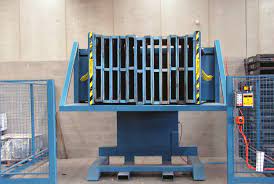
The key is choosing the right type of inverter for your specific needs and space constraints. Not all pallet inverters are created equal. As an engineer who has designed and installed these systems, I always start by analyzing the client's existing workflow. The goal is to insert the solution with minimal disruption, like a key fitting into a lock. Let's explore the options and how they fit into a typical boutique plant.
Choosing the Right Model for Your Space
The type of inverter you choose will determine how it integrates. There are a few main categories, each with its own advantages for a small-footprint operation.
- Free-standing Inverters: This is the most common type. It's a self-contained unit. You bring a pallet to it with a forklift, it does its job, and you take the new pallet away. Its main advantage is flexibility in placement. You can put it wherever you have a bit of open floor.
- In-line or Conveyor-fed Inverters: These are integrated directly into a conveyor system. This is more for a plant that already has some automation. The pallet moves along a conveyor, goes through the inverter automatically, and continues on its way. While it requires more planning, it can create a very seamless, "no-touch" process.
- 90-Degree Tippers (Pallet Changers): These don't do a full 180-degree rotation. Instead, they tilt the load back 90 degrees, allowing the pallet to slide away from the bottom. These can be very fast and often have an even smaller footprint, making them ideal for very tight spaces.
A Practical Integration Scenario
Let's imagine a typical workflow for a boutique food producer in Italy. They receive raw materials on cheap wooden pallets but need to switch to sanitized plastic pallets for use inside their clean production area.
- Before: A truck arrives. Workers use a forklift to bring a wooden pallet to a staging area. Two employees then spend 20 minutes manually moving sacks of flour or boxes of ingredients to a clean plastic pallet. It's slow, it's tiring, and it creates dust and debris right where you don't want it.
- After: The truck arrives. A worker uses a forklift to bring the wooden pallet directly to a free-standing pallet inverter located near the receiving door. The worker places the pallet in the machine, puts a clean plastic pallet on top, and presses a button. In 60 seconds, the load is inverted, and the wooden pallet is removed. The newly transferred load on the plastic pallet is then taken directly into the production area.
| Integration Factor | Description | Benefit for Boutique Plant |
|---|---|---|
| Footprint | Many models are only slightly wider than a pallet. | Can be tucked into a corner or at the end of a rack aisle. |
| Loading Method | Forklift or pallet jack loading is standard. | No need for special equipment. Uses what you already have. |
| Utility Needs | Typically requires a standard electrical connection. Some use hydraulics. | Simple installation with minimal need for specialized contractors. |
| Process Placement | Can be placed at Receiving, Pre-production, or Pre-shipping. | Flexible. Solves the problem where it occurs, improving overall flow. |
I remember helping a small cosmetics company in Milan. Their space was incredibly tight. We chose a compact 90-degree tipper. We placed it right between their raw material storage and their mixing room. It became a gateway. Nothing entered the clean zone without passing through it. It solved their ergonomic problem, and it also massively improved their hygiene protocol. It didn't disrupt their flow; it defined it.
What are the key considerations when choosing a pallet inverter for high-value products?
When you are handling standard, robust goods, the main concern is just getting the job done. But for a boutique producer in Italy working with high-value products—like fine wine, fragile glass, or sensitive electronics—the stakes are much higher. A single mistake can be incredibly costly. Choosing a pallet inverter isn't just about ergonomics anymore. It becomes about precision, control, and absolute product safety. You're not just buying a machine; you're entrusting it with your revenue and reputation.
When choosing a pallet inverter for high-value products, the key considerations are adjustable clamping pressure to prevent crushing, the material of the contact surfaces (like stainless steel for hygiene), and advanced safety features. You must ensure the machine can handle the load gently but firmly, without causing any damage or contamination, to protect the integrity of your premium goods.
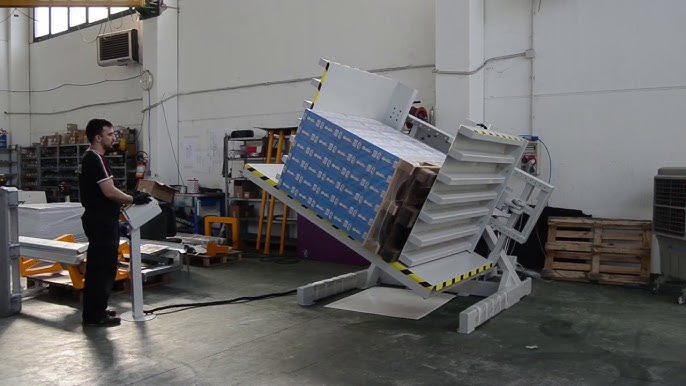
Over my career, I've seen what happens when the wrong machine is used. I once visited a plant that tried to use a basic, high-pressure inverter for cases of expensive bottled oil. The result was shattered glass and a huge, oily mess. It was a painful lesson for them. To avoid that, you need to approach the selection process like an engineer, focusing on the details that matter most for delicate loads.
The Non-Negotiable Features for High-Value Goods
Think of this as a checklist. If you handle valuable or fragile items, your pallet inverter must have these capabilities.
1. Adjustable Clamping Pressure
This is the single most important feature. A pallet of bricks needs high pressure to stay stable. A pallet of delicate perfume boxes needs just enough pressure to hold it securely without denting a single corner. A good machine will allow you to precisely control the clamping pressure, often with a simple gauge and controls. You should be able to set different pressures for different product types. This ensures you can handle everything from heavy, sturdy items to light, fragile ones with the same machine.
2. Surface Materials and Finish
What touches your product matters. For food, beverage, or pharmaceutical products, which are common in Italy's boutique industries, you cannot have surfaces that could rust or flake.
- Stainless Steel: For any surface that might come into contact with the product, stainless steel is the gold standard. It's hygienic, easy to clean, and corrosion-resistant.
- Coated Surfaces: For less sensitive applications, high-quality powder-coated steel is acceptable. But you must ensure the coating is durable and won't chip.
- Soft Paddings: Some inverters offer options for rubber or soft plastic linings on the clamping plates to provide an extra cushion for very delicate items.
3. Smooth and Controlled Motion
The rotation itself must be smooth. A jerky or sudden start or stop can shift the load, causing items to knock against each other. Look for machines with soft-start hydraulic or electric motor controls. This ensures the rotation is a gentle, controlled movement from beginning to end, keeping the internal layers of the pallet stable.
| Feature | Why It's Critical for High-Value Goods | What to Look For |
|---|---|---|
| Pressure Gauge | Provides visual confirmation of the clamping force being applied. | A clear, easy-to-read analog or digital gauge. |
| Variable Speed Control | Allows you to slow down the rotation for unstable or very fragile loads. | Controls that allow adjustment of the rotation speed. |
| Safety Guarding | Prevents accidental contact with the machine during operation and contains any potential spills. | Full caging, light curtains, or pressure-sensitive mats. |
| Load Height Sensor | Automatically detects the height of the load to position the top clamp correctly. | Photo-eye sensors that ensure the clamp doesn't "over-travel" and crush the top layer. |
A client of mine in the pharmaceutical industry needed to switch pallets in a cleanroom environment. The product was incredibly valuable. We worked together to specify a pallet inverter made entirely of polished stainless steel, with a pressure control system so precise it could be set in tiny increments. It was a significant investment, but as he told me later, "Vincent, one ruined batch would have cost me more than this machine. Now, I don't even have to think about it. It just works, safely, every time." That is the peace of mind you are paying for.
Beyond ergonomics, what other benefits do pallet inverters bring to boutique manufacturers?
Solving the ergonomic problem is a huge win. Protecting your workers is always the right thing to do. But as a business owner or a plant manager like Javier, you have to answer to the bottom line. Every investment must be justified by its return. You might be thinking, "This is great for my team's safety, but how does it help me reduce costs and improve my profit margins?" This is a question I get all the time. Many people see a pallet inverter as just a safety device. But that's only seeing a small part of the picture.
Beyond ergonomics, pallet inverters deliver significant operational and financial benefits to boutique manufacturers by increasing throughput speed, drastically reducing product damage, improving warehouse hygiene, and enabling more flexible and cost-effective logistics. These advantages translate directly into lower operating costs and a higher profit margin.
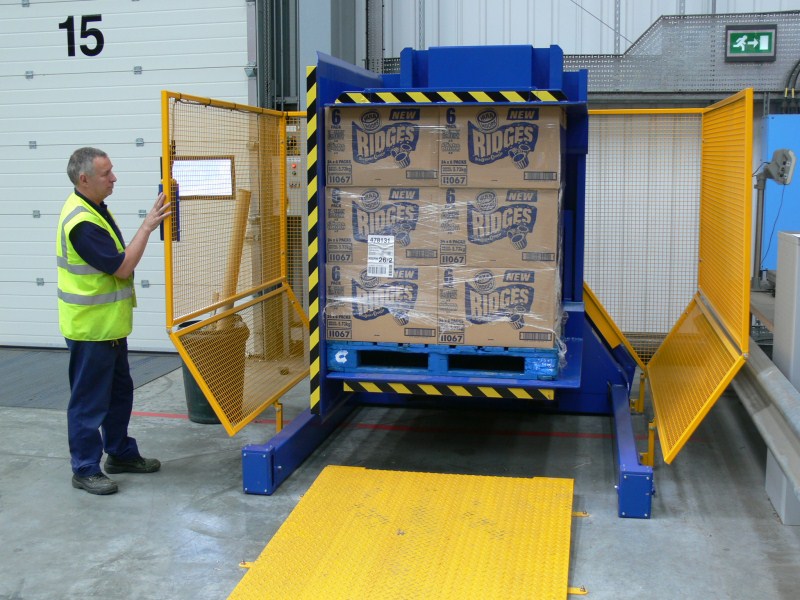
From my experience helping businesses grow, I can tell you that the most successful investments are the ones that solve multiple problems at once. A pallet inverter is a perfect example. It's a strategic tool that can improve your operation in several key areas that directly impact your financial performance, addressing goals like cost reduction and efficiency improvements.
A Cascade of Operational Improvements
Let's break down the benefits that go straight to your bottom line.
1. Radically Reduced Product Damage
Manual handling is clumsy. People get tired. They drop boxes. They stack things unevenly. When you are dealing with high-value Italian goods, every broken bottle of wine or chipped ceramic tile is money thrown away. A pallet inverter handles the entire load as one stable block. It doesn't drop, crush, or shift the contents. I have seen clients reduce their product damage rates during pallet transfer to virtually zero. This is a direct saving.
2. Increased Throughput and Labor Efficiency
How long does it take two workers to manually transfer a full pallet? 15 minutes? 20 minutes? A pallet inverter does the same job in about 60-90 seconds with one operator. This isn't about eliminating jobs; it's about re-tasking your valuable human resources. The worker who was spending hours doing back-breaking labor can now operate the inverter and then spend the rest of their time on quality control, inventory management, or preparing the next shipment. You get more done in less time with the same number of people.
3. Enhanced Hygiene and Quality Control
For food, pharma, and other clean industries, this is huge. Wooden pallets are porous. They absorb moisture, harbor bacteria, and shed splinters. Many boutique plants need to transfer goods from "dirty" incoming wood pallets to clean, sanitized in-house plastic or metal pallets. An inverter makes this a fast, clean, and simple part of your receiving process. It becomes a firewall, preventing contamination from entering your production floor. It also gives you an easy way to inspect the bottom layers of a load for damage or quality issues without de-stacking the whole thing.
The Financial Return on Investment (ROI)
These operational benefits create a clear financial return.
| Benefit Area | Manual Process Cost | Pallet Inverter Benefit | Financial Impact |
|---|---|---|---|
| Product Damage | 1-2% of load value lost due to drops/crushing. | Damage rate drops to <0.1%. | Direct savings on lost product. |
| Labor Time | 2 workers, 20 minutes per pallet. | 1 worker, 1.5 minutes per pallet. | ~90% reduction in labor hours for this task. |
| Worker Injury | Costs from compensation, lost time, and hiring replacements. | Ergonomic risks are eliminated. | Lower insurance premiums and no lost-time costs. |
| Logistics | Must ship on expensive export-grade pallets. | Easily switch from cheap in-house pallets to required shipping pallets. | Significant savings on pallet costs. |
When I started my own factory, I had to watch every penny. Every machine had to pay for itself. A tool like a pallet inverter doesn't just save you money on one thing. It saves you a little bit on labor, a little bit on damaged goods, a little bit on pallet costs. But when you add all those "little bits" up over the course of a year, they become a very big number. It's a classic example of how a smart investment in the right equipment can make your entire operation leaner, faster, and more profitable.
My Insights
When I talk to clients like Javier, a steel mill owner, or the head of a boutique plant in Italy, I see the same thing. They are not just buying a machine. They are looking for a solution to a complex set of challenges—cost pressures, labor issues, and the constant demand for higher quality and efficiency.
In my journey from a young engineer on the factory floor to owning my own business, I learned a powerful lesson: technology is only a tool. Its real value is in how it helps people. A pallet inverter is a great piece of engineering, but its purpose is to protect a worker's back so he can go home to his family without pain. Its purpose is to save a small business from the financial sting of damaged goods so it can afford to grow.
A machine supplier who just wants to sell you a piece of equipment doesn't understand this. A true strategic partner does. A partner takes the time to understand your specific challenges. They don't just ask "What machine do you want?" They ask "What problem are you trying to solve?" For Javier, it might be about throughput and integrating with a new digital system. For the Italian producer, it's about protecting fragile products and skilled artisans.
The solution might be the same machine, but the reason for it is different. My goal with SHJLPACK has always been to be that partner. I want to share the knowledge I gained over 25 years to help you find the right tool for your specific reason. Because when your business succeeds, and your people are safe and productive, we all succeed. That's the real return on investment.
Conclusion
Pallet inverters provide a simple, effective solution for ergonomic safety in boutique plants, protecting workers while boosting efficiency, reducing damage, and ultimately improving the bottom line for your business.




